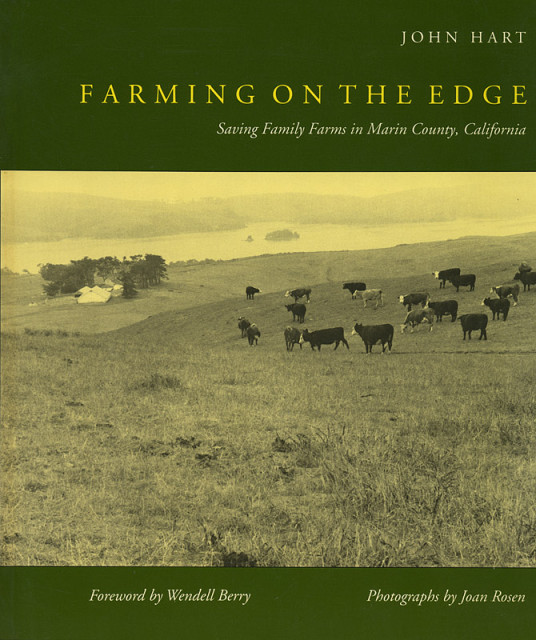
After decades of planning for blanket suburbanization, the County of Marin, just north of San Francisco became one of the first communities in the state to change course and seek to preserve its farmland. But was it too late? Farming on the Edge tells how the rescue mission was accomplished, through a mixture of controversial zoning,, soothing subsidies, and ultimately the creation of the nationís first land trust devoted specifically to the conservation of agricultural land. Farming On the Edge won the Commonwealth Club of Californiaís Medal in Californiana in 1992.
EXCERPT
A hillside above Tomales Bay, and the California fog moves in. Not much gets in its way: a rock outcrop, a barn, a row of pale-barked eucalyptus trees. Cattle, somewhere, are lowing. The bayóas long for its width as a Norwegian fiord, a saltwater river marking the line of an earthquake faultóglimmers across to a darker, forested shore.
There was a time when government planners looked forward to 43,000 acres of suburbs on this waterside. “By 1990,” a Marin County official said in 1971, “Tomales Bay will probably look like Malibu.” That it doesn’t look like Malibuóhow it came about that it doesn’t look like Malibuóis a story of much more than local interest.
It’s not some inaccessible backwater, this bay Tomales. It lies just outside a major metropolitan area, forty miles and a bridge away from San Francisco, within reach of six million people. The urban part of Marin County, across a couple of chains of hills, has the highest per capita income in the state. Even out here, the price of land per acre is well above what might be justified by the narrow profits of dairying or the erratic returns of cattle-ranching and sheep-raisingóthe main agricultural pursuits. Land speculators have bought and sold here; city-sized developments have been proposed.
We know in America what to expect when matters reach such a point. There may be regret; there may be protest; there may even be some ordinances passed. But once development pressure begins seriously to be felt, one thing leads to another, an avalanche of change. Sooner or later the countryside is gone, “converted” as the jargon puts it, made part of the urban scene.
Here that process was well begun. Then came a quiet revolution: something almost resembling a palace conspiracy of able planners. An election. A crucial one-vote shift on a county government board. A jerky turnabout in policy. After 1971, urban growth, in western Marin County, was officially out of favor; continued ranching was in.
But the fact that the policy shifted is not really the story. Such re-beginnings have been attempted in various places; in the typical county or town, the new rules are never really carried out, or gradually fray away as public attention fades. The remarkable thing about what Marin County did is that, in the years since 1971, it has kept on doing it: that West Marin was actually drawn back, like a piece of wood already blackening, from the urban fire.
REVIEWS
Farming on the Edge tells the story of a diversity of people who have acted with good sense to define and protect their common interest. It is an interesting book, and it is a moving one because it gives hope. – Wendell Berry
An intriguing tale superbly well told. – Harold Gilliam, San Francisco Chronicle
The book reads like a who-done-it. – Coastal Post
PURCHASE